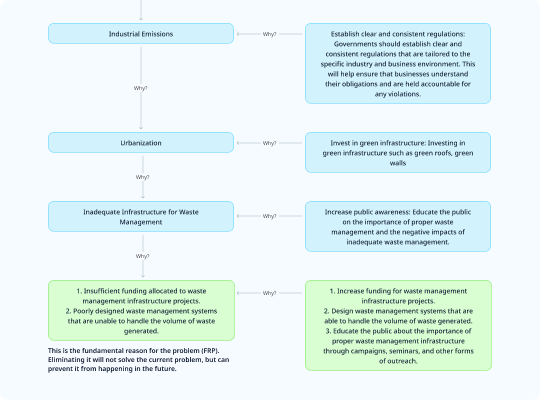The 5 Whys tool is a commonly used method for Root Cause Analysis. It is often seen as a simple process of asking the question ‘Why?’ five times to uncover the underlying reason behind a problem. However, this perception is not entirely accurate. The 5 Whys is actually a powerful creative thinking tool designed for thorough problem analysis and resolution.
Here, we present a modified version of the 5 Whys tool, incorporating concepts developed by PRIZ Guru Inc. This modified version offers the following key features:
- Comprehensive Problem Analysis: To facilitate a more detailed analysis, we introduce the 5+ Whys tool, which encourages an extended sequence of ‘Whys’ to dig deeper into the issue.
- Root Cause as a Source of Solutions: While identifying the Fundamental Reason of the Problem (FRP) is important, it may not always lead to problem resolution. We emphasize that a Root Cause can also be a source of solutions, with each step potentially contributing to a solution.
- Machine Assistance: Incorporating machine assistance can be valuable during the search for root causes and the creation of solutions, streamlining the process.
- Effective Ideas and Solutions Management: The 5+Whys method places a strong emphasis on ranking ideas and solutions, as well as making informed decisions, ensuring a comprehensive approach to problem-solving.
What can you gain from using 5+Whys?
The 5+Whys technique is a valuable tool for creative thinking that helps break free from psychological inertia. It redirects our focus towards a logical analysis of sequential causes and effects. By utilizing this tool, we can achieve a deeper understanding of systems and generate effective solutions. Here are some notable benefits associated with using the 5+Whys technique:
- Improve your understanding of the system by identifying its most problematic aspects.
- Shift from guesswork to generating reasoned solutions and ideas.
- Establish pathways for future system development.
- Cultivate effective problem-solving within your team.
When should you use the 5+Whys tool?
The 5+Whys tool is highly effective in providing quick responses and is invaluable in various scenarios. It is especially useful for addressing unexpected parameter deviations (excursions) and analyzing and resolving chronic problems. Some notable applications include:
- Dealing with unforeseen deviation.
- Improving Key Performance Indicator (KPI) metrics for chronic issues.
- Promoting innovation and process optimization.
- Supporting continuous process and product improvement.
Furthermore, the 5+Whys thinking tool is versatile and can be applied in numerous other contexts to harness its creative problem-solving potential.
